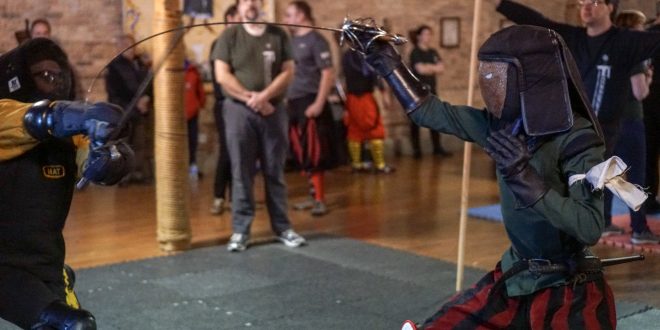Historical martial arts can seem like a world of mystery and intrigue, especially for beginners. With so many styles, techniques, and philosophies to explore, it can be overwhelming at first. But don’t worry – diving into these ancient disciplines, including Historical European Martial Arts, is not as difficult as it may seem. All it takes is a bit of research, some patience, and a strong willingness to learn.
Understanding Historical Martial Arts
Before starting your journey into historical martial arts, it’s essential to understand what they are. These arts, such as medieval sword fighting, samurai traditions, or European longsword, come from various cultures around the world. They have evolved over centuries and were initially created for self-defense, warfare, or sport. Today, they are practiced by enthusiasts who wish to connect with the past while developing discipline and physical skill.
Researching Different Styles
There’s no one-size-fits-all approach when it comes to historical martial arts. As a beginner, the first step is to learn about the different styles available. You could explore the graceful movements of Chinese Kung Fu, the strategic techniques of Japanese Kenjutsu, or even the brutal efficiency of European fencing. Spend time researching the history and techniques behind each discipline to figure out which one resonates with you the most.
Finding Local Schools or Instructors
Once you have a better understanding of the martial arts that interest you, the next step is to find local schools or instructors. Many cities have dojos, academies, or clubs that specialize in historical European martial arts (HEMA), kenjutsu, or other traditional combat forms. Instructors at these schools are usually well-versed in the history and techniques of the martial art they teach. They can offer valuable insights into how to begin training and progressing through the ranks.
Starting With the Basics
When you begin training, it’s important to start with the basics. In historical martial arts, fundamentals such as stances, footwork, and balance are critical. For instance, when learning the European longsword, mastering the footwork and positioning will make you a much stronger fighter as you progress. Practicing these simple but essential movements will give you a solid foundation to build on as you delve deeper into more advanced techniques.
Embracing the Philosophy of the Art
Martial arts are not just physical training; they’re deeply philosophical. Whether it’s the Japanese bushido code or the European knightly virtues, these philosophies shape the way practitioners approach their training. As a beginner, it’s important to embrace these philosophies. They will guide you on your journey and help you develop the mental discipline necessary to succeed in martial arts. As you move forward, you’ll not only be training your body but also sharpening your mind.
Training Regularly
Consistency is key when it comes to mastering any martial art, and historical forms are no different. Make sure to train regularly, ideally several times a week. This will help you develop muscle memory, improve coordination, and gain a deeper understanding of the art. Training regularly also builds mental resilience, as martial arts can sometimes be physically demanding. Whether you’re practicing solo drills or sparring with a partner, the more you train, the better you will become.
Attending Workshops and Events
Workshops and events are great opportunities to enhance your skills and meet like-minded individuals. Many arts schools host special events where they invite guest instructors to teach specific techniques. These workshops are valuable for beginners, as they offer a chance to get hands-on instruction and observe advanced practitioners. Additionally, these events can be a lot of fun, allowing you to immerse yourself in the historical aspect of martial arts.
Understanding Weaponry and Equipment
A unique aspect of historical martial arts is the use of weapons. Whether you’re wielding a longsword, a katana, or a spear, understanding the proper equipment and weaponry is essential for safety and performance. Many beginners make the mistake of diving straight into sparring with weapons without understanding how to use them properly. It’s important to take the time to learn about the weaponry, how to maintain it, and how to use it safely. Always train with the correct gear to avoid injuries.
Building Patience and Resilience
Learning any martial art takes time, and historical forms are no exception. As a beginner, you may face challenges and setbacks. There will be moments where progress feels slow, and frustration sets in. However, building patience and resilience is part of the process. Understand that mastery comes with time, and it’s the consistent effort that will pay off in the long run. Keep an open mind, stay humble, and focus on enjoying the journey rather than rushing the process.
Engaging with the Community
One of the best parts of exploring historical martial arts is the sense of community. Joining a local club or attending events allows you to meet other enthusiasts, exchange knowledge, and grow together. The martial arts community is often welcoming and supportive, especially toward beginners. Engaging with others will help keep you motivated and give you the opportunity to learn from more experienced practitioners.
Final Thought
Exploring historical martial arts is a rewarding and fulfilling journey that combines physical fitness, mental discipline, and a connection to history. As a beginner, it’s important to stay curious, embrace the basics, and commit to regular practice. With time, you’ll discover not just the techniques of ancient warriors but also how these arts can shape you into a more disciplined, patient, and skilled individual. Enjoy the ride and remember – every master was once a beginner.
 Crypto trade Online Unlock the Future of Finance Today.
Crypto trade Online Unlock the Future of Finance Today.
